Readers are Leaders
전체기사 보기-
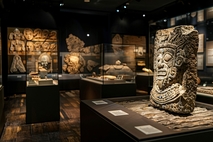
The Ancient Mayan Civilization
Who Were the Maya?The ancient Maya were a powerful civilization that lived in Central America. They built great cities and had an advanced culture. The Maya lived in what is now southern Mexico, Guatemala, Belize, and parts of Honduras and El Salvador. The Maya civilization began more than 3,000 years ago and reached its peak between AD 250 and 900. Mayan Cities and PyramidsThe Maya built amazing cities with large stone pyramids, palaces, and temples. Some famous cities include Tikal, Copán, and Chichén Itzá. In the center of each city was a great plaza for ceremonies. The Maya used huge stone
-
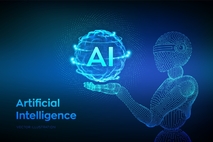
AI: The Technology That Thinks
Artificial Intelligence — or AI — is one of the most exciting and powerful technologies of our time. Once just an idea from science fiction, AI is now part of our daily lives, from smart assistants on our phones to self-driving cars. But what exactly is AI, and how is it changing the world? At its core, AI is about creating machines that can think, learn, and solve problems. Traditional computers follow fixed instructions, but AI systems can adapt. They use data to learn and make decisions. For example, when you stream music or shop online, AI recommends songs or products you might like, based
-
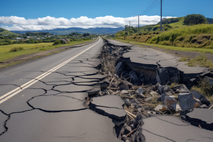
Earthquakes: When the Ground Shakes
What Is an Earthquake?An earthquake happens when the ground suddenly shakes. This shaking is caused by movements inside the Earth. The Earth’s surface is made of large pieces of rock called tectonic plates. These plates are always moving, but very slowly. Sometimes, the plates push against each other and get stuck. Over time, a lot of energy builds up. When the plates finally move, the energy is released as an earthquake. The ground can shake a little or a lot — depending on how much energy is released. How Do We Measure Earthquakes?Scientists use a tool called a seismograph to measure earthqu
-
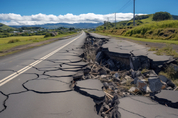
Earthquakes: When the Ground Shakes
What Is an Earthquake?An earthquake happens when the ground suddenly shakes. This shaking is caused by movements inside the Earth. The Earth’s surface is made of large pieces of rock called tectonic plates. These plates are always moving, but very slowly. Sometimes, the plates push against each other and get stuck. Over time, a lot of energy builds up. When the plates finally move, the energy is released as an earthquake. The ground can shake a little or a lot — depending on how much energy is released. How Do We Measure Earthquakes?Scientists use a tool called a seismograph to measure earthqu
- 관리자 기자
- 2025-06-10 01:25
-
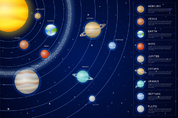
The Solar System
What Is the Solar System?The Solar System is made up of the Sun and everything that moves around it. The Sun is a giant ball of hot gas that gives us light and heat. Without it, life on Earth would not exist. Eight planets, many moons, asteroids, comets, and space dust all orbit the Sun. These objects are held in place by the Sun’s gravity. The Eight PlanetsThe planets are divided into two groups: Inner planets:Mercury, Venus, Earth, Mars→ They are rocky and smaller. Outer planets:Jupiter, Saturn, Uranus, Neptune→ They are gas giants (except Uranus and Neptune, which are called ice giants) and
- 관리자 기자
- 2025-06-10 01:21
-
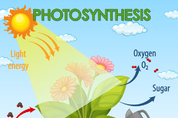
Photosynthesis: How Plants Make Their Own Food
[ Reading passage ] Photosynthesis is a chemical process that allows plants to create their own food. It mainly takes place in the chloroplasts of plant cells. Chloroplasts contain chlorophyll, the green pigment that absorbs sunlight. The basic equation of photosynthesis is:Carbon dioxide (CO₂) + Water (H₂O) + Sunlight → Glucose (C₆H₁₂O₆) + Oxygen (O₂) Let’s break it down:1️⃣ Water is absorbed from the soil through the plant’s roots.2️⃣ Carbon dioxide enters the plant through small openings in the leaves called stomata.3️⃣ Sunlight is captured by chlorophyll. Using energy from sunlight, the pl
- 관리자 기자
- 2025-06-10 01:16
-
 Entertainment · Broadcasting
Fair Play Menarini International Award, 29th Award Ceremony marked by waves of emotion
Entertainment · Broadcasting
Fair Play Menarini International Award, 29th Award Ceremony marked by waves of emotion
-
 Entertainment · Broadcasting
The Rose, the first Korean band to perform at Coachella, confirms Seoul concert on August 30 for “Once Upon a WRLD”
Entertainment · Broadcasting
The Rose, the first Korean band to perform at Coachella, confirms Seoul concert on August 30 for “Once Upon a WRLD”
-
 Culture · Events
Incheon Port Authority kicks off the 6th Incheon International Marine Forum in Songdo, Incheon, to look into the future of the global marine industry
Culture · Events
Incheon Port Authority kicks off the 6th Incheon International Marine Forum in Songdo, Incheon, to look into the future of the global marine industry
-
 Culture · Events
Seocho Symphony Orchestra to hold performances in Berlin, Germany, and London, England, commemorating the 80th anniversary of liberation and the 75th anniversary of the Korean War
Culture · Events
Seocho Symphony Orchestra to hold performances in Berlin, Germany, and London, England, commemorating the 80th anniversary of liberation and the 75th anniversary of the Korean War
-
 Culture · Events
Gyeonggi Province to hold its largest job fair for middle-aged and older workers on the 9th. 1,000 jobs to be filled.
Culture · Events
Gyeonggi Province to hold its largest job fair for middle-aged and older workers on the 9th. 1,000 jobs to be filled.
-
 International
Jeju's soul resonates in Rome... Singing of the pain and reconciliation of Jeju 4·3
International
Jeju's soul resonates in Rome... Singing of the pain and reconciliation of Jeju 4·3
-
 International
Seoul City establishes a foothold for K-Beauty and fashion to enter the European market, promoting Milan as a base
International
Seoul City establishes a foothold for K-Beauty and fashion to enter the European market, promoting Milan as a base
-
 Medical · Health
Korean Centers for Disease Control and Prevention: Increase in hand, foot, and mouth disease among infants and young children! Follow preventive measures and maintain good hygiene to stay healthy.
Medical · Health
Korean Centers for Disease Control and Prevention: Increase in hand, foot, and mouth disease among infants and young children! Follow preventive measures and maintain good hygiene to stay healthy.
-
 Medical · Health
Korean Centers for Disease Control and Prevention: Injured patients account for the largest proportion of hospitalized patients; falls are the main cause
Medical · Health
Korean Centers for Disease Control and Prevention: Injured patients account for the largest proportion of hospitalized patients; falls are the main cause
-
 Medical · Health
WHO and international health experts visit Wanju local food production sites
Medical · Health
WHO and international health experts visit Wanju local food production sites
오피니언
-
JP EDU - Hidden Opportunities in Japan: English-Taught International Studies Programs Open Doors to Prestigious Universities
Can you enter a top Japanese university without speaking Japanese? Can you enter a top Japanese university without speaking Japanese? Surprisingly, the answer is yes. Much like Korea’s Yonsei University Underwood International College or the Songdo Global Campus, more than 40 Japanese universities now offer full-degree programs conducted entirely in English. These English-taught programs—often called G30 programs—are especially popular in the field of International Studies. Admission is based on a student’s academic record (GPA) and English proficiency, rather than Japanese language ability. A
-
대한민국영어신문 주니어 영어 기자단 모집 (2026년 제 1기)
대한민국영어신문 주니어 영어기자단 모집 안내영어로 세상을 보고, 글로 성장하는 주니어 기자단! 1. 모집 대상 모집 인원: 총 00명 한정 모집 지원 자격: 초등학교 2학년 ~ 고등학교 2학년 학생 (영어에 관심이 있고, 글쓰기와 인터뷰 활동에 도전하고 싶은 학생 누구나) 2. 활동 내용 영어신문 기자로서 기사 작성, 인터뷰, 취재, 콘텐츠 기획 참여 온라인 영어 학습 콘텐츠 무료 제공 및 기사 첨삭 지도를 통한 영어 실력 향상 정기 영어 특강, 현장 캠프, 멘토링, 전문가 영어학습 컨설팅 제공 작성한 기사는 대한민국영어신문 공식 온라인 플랫폼에 게재 3. 혜택 및 특전 영어기자증 발급 및 임명식 진행 우수기자 시상 및 특전 제공 1:1 기사첨삭 및 학습 피드백 온라인 영어 학습 콘텐츠 무료 제공 연간 36회 이상 기사 게재 기회 부여 -> 공식 칼럼 섹션 제공 4. 모집 일정 1차 신청 기간: ~ 2025년 11월 28일(금)까지 2차 신청 기간: ~ 2025년 12월 26일 (금)까지 신청 방법: 1) 대한민국영어신문 홈페이지 온라인 폼 신청 * 아래 링크 클릭 기자단 신
-
Lotte Scholarship Foundation Provides 300 Job Seekers with 300 Million Won in Scholarships and Employment Training Support
The Lotte Scholarship Foundation (Chairwoman Jang Hye-seon) held the “Shin Kyuk-ho Lotte Scholarship Award Ceremony for Job Seekers” on Tuesday, May 5, at the Lotte Retail Academy in Yeongdeungpo-gu, Seoul, and presented a total of 300 million won in scholarships to 300 job seekers in the media and engineering fields. This year's scholarship recipients will each receive a living expense scholarship of 1 million won, and will also have the opportunity to participate in various job experience education programs to learn about their desired fields and develop their expertise. The education progra
-
Lotte Scholarship Foundation to Provide 270 Million Won in Scholarships to 100 Teenage Mentors
The Lotte Scholarship Foundation (Chairwoman Jang Hye-sun) held the “Shin Geuk-ho Lotte L-Bridge Scholarship Award Ceremony” on Thursday, March 31, at the Kyowon Tour Concert Hall in Jongno-gu, Seoul, and announced that it would award a total of 270 million won in L-Bridge scholarships to 100 scholarship recipients this year. The Shin Geuk-ho Lotte L-Bridge Scholarship is a scholarship program that supports teenagers in low-income families and out-of-school teenagers who are facing challenges in their education and growth. It helps them develop into talented individuals who can practice the va
-
Rethinking the Way We Handle the High School Credit System
Rethinking the Way We Handle the High School Credit System (고교학점제) School should not be a place where every student is forced into the same mold, but a space where different talents and dreams are nurtured. The High School Credit System (고교학점제), scheduled to be fully implemented in Korea by 2025, is a bold step toward personalized learning. Its goal is to give students more choice in what they study — allowing them to take courses that match their interests, abilities, and future goals, much like in a university setting. But as the system moves from theory to practice, important challenges are
-
일본어 기초 회화 4
[Today's Dialogue | 오늘의 대화] A: きょうは なんにちですか?Kyō wa nan-nichi desu ka?오늘은 며칠이에요? B: きょうは 7がつ 9か です。Kyō wa shichi-gatsu kokonoka desu.오늘은 7월 9일이에요. A: ありがとうございます。メモします!Arigatō gozaimasu. Memo shimasu!감사합니다. 메모할게요! [Keywords | 키워드] 일본어 의미 きょう 오늘 なんにち 며칠 がつ ~월 にち/か ~일 メモします 메모합니다 (적습니다) [Key Phrase Breakdown | 핵심 표현 해설] 1️⃣ きょうは なんにちですか?→ "오늘은 며칠인가요?"질문형 표현으로, 학교나 사무실에서 자주 쓰이는 문장이에요. 2️⃣ 7がつ 9か→ "7월 9일"을 뜻해요.주의할 점: 일본어 날짜 읽기는 예외가 많아요.예: 9일 = ここのか, 1일 = ついたち 3️⃣ メモします→ "메모합니다 / 적을게요"로 회화에서 자주 쓰이는 실용 표현이에요. [TIP! 활용 팁] ✅ 일본어 날짜 표현에는 예외 발음이 많으므로 아래
-
2025-11-04 13:48
JP EDU - Hidden Opportunities in Japan: English-Taught International Studies Programs Open Doors to Prestigious Universities
-
2025-10-27 11:03
대한민국영어신문 주니어 영어 기자단 모집 (2026년 제 1기)
-
2025-08-07 01:19
Lotte Scholarship Foundation Provides 300 Job Seekers with 300 Million Won in Scholarships and Employment Training Support
-
2025-08-01 09:42
Lotte Scholarship Foundation to Provide 270 Million Won in Scholarships to 100 Teenage Mentors
-
2025-07-09 11:08
Rethinking the Way We Handle the High School Credit System

대한민국영어신문 주니어 영어 기자단 모집 (2026년 제 1기)
대한민국영어신문 주니어 영어기자단 모집 안내영어로 세상을 보고, 글로 성장하는 주니어 기자단! 1. 모집 대상 모집 인원: 총 00명 한정 모집 지원 자격: 초등학교 2학년 ~ 고등학교 2학년 학생 (영어에 관심이 있고, 글쓰기와 인터뷰 활동에 도전하고 싶은 학생 누구나) 2. 활동 내용 영어신문 기자로서 기사 작성, 인터뷰, 취재, 콘텐츠 기획 참여 온라인 영어 학습 콘텐츠 무료 제공 및 기사 첨삭 지도를 통한 영어 실력 향상 정기 영어 특강, 현장 캠프, 멘토링, 전문가 영어학습 컨설팅 제공 작성한 기사는 대한민국영어신문 공식 온라인 플랫폼에 게재 3. 혜택 및 특전 영어기자증 발급 및 임명식 진행 우수기자 시상 및 특전 제공 1:1 기사첨삭 및 학습 피드백 온라인 영어 학습 콘텐츠 무료 제공 연간 36회 이상 기사 게재 기회 부여 -> 공식 칼럼 섹션 제공 4. 모집 일정 1차 신청 기간: ~ 2025년 11월 28일(금)까지 2차 신청 기간: ~ 2025년 12월 26일 (금)까지 신청 방법: 1) 대한민국영어신문 홈페이지 온라인 폼 신청 * 아래 링크 클릭 기자단 신

No. 5 Reporter
Sophia Lee – Grade 7, Cedar Hills Middle School Hello, I’m Sophia Lee from Cedar Hills Middle School. I love reading mystery novels and listening to podcasts about true stories. I joined the Junior English Journalists because I want to write articles that are thoughtful and help people see things differently. I want to write about nature, the environment, and young people’s ideas for change. My dream is to become an environmental journalist who works for National Geographic.





















